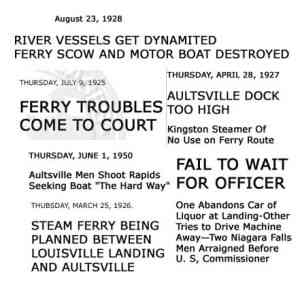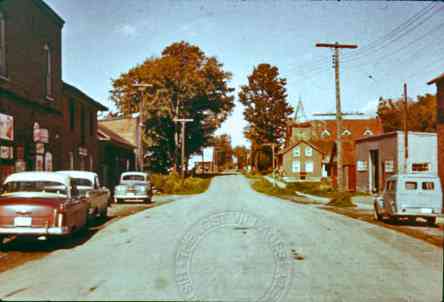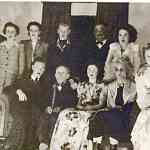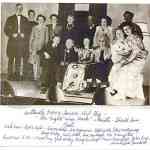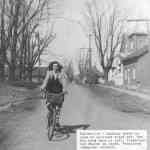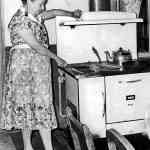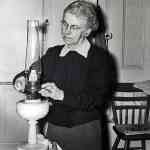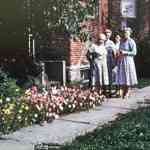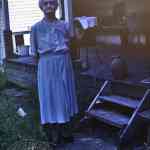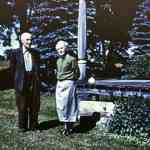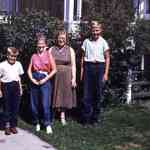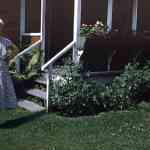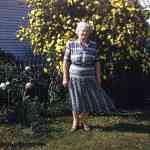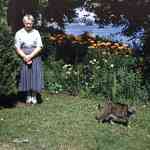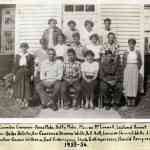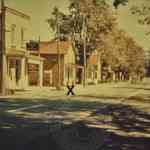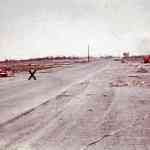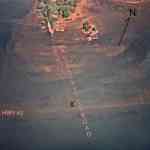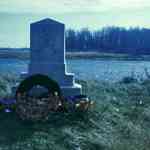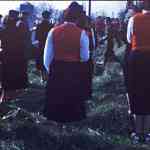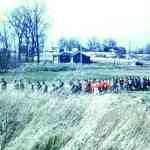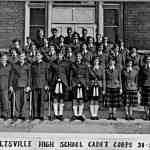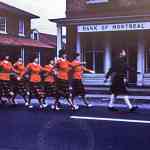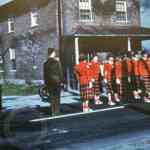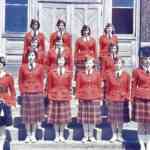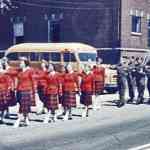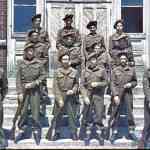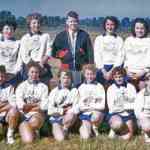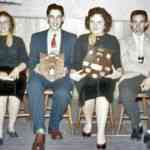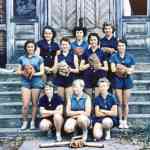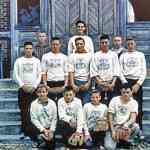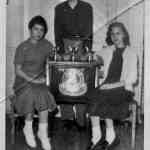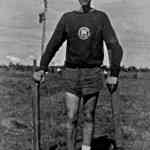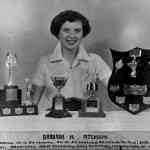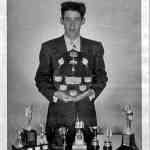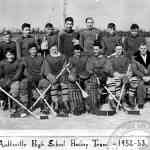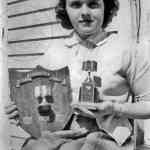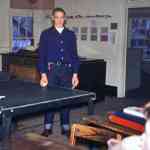Aultsville
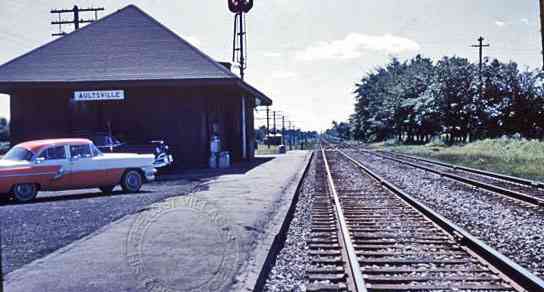
Originally called Charlesville, (the reason is unknown), the area for this village was first settled by disbanded soldiers of the King’s Royal Regiment of New York. The five original soldiers, William Impey, Francis Albrant, Abraham Freeze, Alexander Rose and Michael Ault named their fledgling settlement Charlesville and then slowly began the hard work of establishing a real community. Charlesville’s first store and tavern was opened around 1787 by another Loyalist settler, Richard Loucks, who received a 400 acre land grant just west of the original town site. The Loucks Tavern, sometimes known as the Lunenburg. The tavern included a pillory so prisoners could be padlocked just in case they tried to escape. A post office operated by Joseph Bockus was known to have existed as early as 1832.
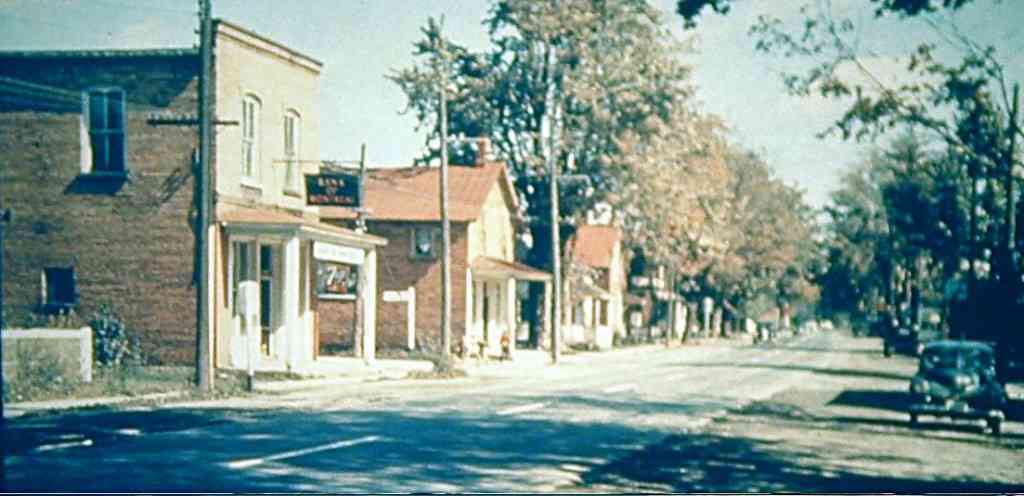 The village was later renamed Aultsville, in honour of Samuel Ault a member of Canada’s first parliament in 1867, and a resident of the community. Samuel Ault’s father, Nicholas J. Ault, dammed the creek at the village site, built a sawmill, and shipped lumber downriver to Montreal. Isaiah Ault was postmaster for many years, then reeve for the Township of Osnabruck, and finally warden for the United Counties of Stormont, Dundas and Glengarry in 1891.
The village was later renamed Aultsville, in honour of Samuel Ault a member of Canada’s first parliament in 1867, and a resident of the community. Samuel Ault’s father, Nicholas J. Ault, dammed the creek at the village site, built a sawmill, and shipped lumber downriver to Montreal. Isaiah Ault was postmaster for many years, then reeve for the Township of Osnabruck, and finally warden for the United Counties of Stormont, Dundas and Glengarry in 1891.
In the mid 1840s Aultsville had about 120 residents and one tavern. The arrival of the Grand Trunk Railway in 1856 opened a new period of growth and prosperity for Aultsville. By the 1870s the village’s population had jumped to 400. In addition to the railway. there was also a rather crude ‘passenger ferry’ operating between Aultsville and Louisville Landing, New York during the summer. The village continued to grow adding a second brickyard, owned by Thomas McConnell, the Riverview Hotel and a general store and cheese factory operated by John Croils and Alexander McCullough. Butter and cheese from Croils’ and McCulloughs’ factory, located near the railway station, was frequently shipped to Montreal for sale. An elementary school was built in 1864.
Some stories about the ferry service between Canada and America, the stiff competition and many local names. Click on the image for the full stories.
Looking up and down Nelson Street (above. East-West), more commonly known as Aultsville Road. That’s George Hickey’s red 1953 Ford parked in front of Bedingfield’s store on the left. Further along in the same building was the funeral parlour, directly across the street, east side, were shed’s owned by A. Dafoe, one of which was used as the fire station. In the early years, on the east side of Dafoe’s store was the Molson Bank, later bought out by the Bank of Montreal. Further up the street, on the east side one can see the roof, with its three gables, and spire of the Immanuel Presbyterian Church.
FACES AND PLACES
Below are various views of streets, buildings and the people who lived and worked in Aultsville. Most if not all the photos below where taken by Mr. George Hickey as a photo essay of the village homes just prior to hydro coming in and cut down all the trees in town. After decades of uncertainty and disbelief, the cutting of the all trees finally convinced everyone that the flooding of Aultsville was truly inevitable. “Once they cut down those centuries old majestic trees, the homes were about as appealing as an old woman with no clothes on”, George.
Although the most of the colour photo are from the early 1950s, the names aren’t necessarily of the last owners just prior to the seaway, but quite often the name attached to the house, home or building because of a famous builder or owner or business that may have once operated from that location.
PEOPLE OF AULTSVILLE
BEFORE & AFTER
- Street before flooding
- Street after demolition
- Street now under water
CADETS & REMEMBRANCE
SPORTS & AWARDS
AULTSVILLE INDUSTRIAL PARK
While sorting through the documents and papers from the Fran Laflamme Estate, the following information was found, provided to the historical society by James Gordon Jarvis, Webster, New York, on April 10, 1991. This information provides an excellent glimpse into the “life and times” around the Aultsville Railway Station and the businesses which built around it. In recent newsletters, information on some of the “Lost Villages” has been provided, as told by those who lived in the villages. We trust that this information, provided by Mr. Jarvis, will bring back memories.
The Edwards cheese factory at Aultsville, in the 1930’s and ’40’s, made both cheese and butter. It was of concrete-block construction; up to the late ’30’s, it was about 2/3rds of its final size. Photographs show a seam in the concrete blocks where the addition of a cold-storage facility was made to the west. The refrigeration plant was electrically powered, was of the ammonia type, and sat on a platform on the north side of the building, and not far from the Canadian National Railway siding. Prior to the installation of the refrigeration plant, there was a large icehouse, between the factory’s “parking” lot and the property of the grist mill.
Ice was cut in the St. Lawrence, near the Aultsville wharf, and hauled to the icehouse by horse-drawn bob-sleighs. It was great fun “hitching” rides on the sleighs (a favourite Saturday activity of mine). The ice was buried in sawdust insulation and lasted through the following spring, summer and fall. The ice was used almost exclusively to chill the cream, rapidly, after it had been heated in the pasteurizers; then it was pumped into a large cylindrical churn made from imported cyprus. Until the refrigeration plant was introduced, cheese was cured at whatever temperature prevailed.
Heating for the cheese vats and the pasteurizers was by steam generated in a coal fired boiler, at the east end of the factory; a large metal stack often belched black smoke. W.A. Edwards, in the ’30’s, owned at least two other cheese factories: one was in East Williamsburg, on the banks of the St. Lawrence; the other was at the north end of the paved section of the Aultsville Road (between Gallingertown and Osnabruck Centre). They were operated by sons Charles and Jack, respectively.
Prior to World War II, most farmers brought their milk or cream to the factory on horse-drawn wagons. After World War II, trucks picked up milk over large areas, making the local factories unnecessary; they rapidly disappeared. Sons Marshall and Malcolm Edwards operated the Aultsville plant. W.A. Edwards suffered severely from Parkinson’s Disease, and was not active himself from the mid-’30’s onward.
Up until World War II, most roads were not plowed in winter. This, in combination with lower milk production by the cows, made it attractive for farmers to “separate” cream on site and to either churn their own butter or deliver the small volume of cream (in a horse-drawn cutter) to the factory. Home-churned butter (called dairy butter as opposed to creamery butter) was “traded” at the Jarvis & Shaver store and, in turn, shipped to Montreal on the “Moccasin”. Dairy butter disappeared when laws were passed that forced the pasteurization of all cream being churned into butter. Skim milk, butter milk, and cheese whey were all collected in a huge vat above the boiler and gravity-dispersed into the farmers’ empty milk or cream cans and used, subsequently, to slurry the milled pig-feed bought from Jarvis & Shaver. Cheese, at that time, was not made from pasteurized milk. It had to be cured a minimum of 30(?) days before being sold. The curing period, presumably, killed harmful bacteria.
The grist mill was built in the late 1920’s or early 1930’s. It contained a mill in which the grinding plates were of metal and were belt-driven by a large electric motor. There was storage space, on the ground floor, for bags of feed; however, most of the grinding was on a custom basis (farmers paid to have their own grain ground, and took it back home). There was a small heated office in the south-west corner. On the upper floor there were large bins that could be filled by bucket-type elevators. However, to the best of my knowledge, no grain was ever stored there. It was said that the support columns were too small to support any useful tonnage of grain! The bases of the elevators were open on the CN side of the building and could have been fed via an inclined chute from cars on the siding. There was, also, a double door on the CN side, that could be used to off-load freight cars.
The grist mill was first owned, I believe, by a Snetsinger family from Moulinette. They ran it for a few years, rather unsuccessfully (depression years!), and sold it to Wilbur Crites who ran it until it was purchased by Jarvis & Shaver in the late 1930’s. It was actually operated by Shaver’s brother (Charlie) and his sons. Jarvis & Shaver used the office as an egg-grading station for a few years. After World War II, the grist mill was sold to W.A. Edwards (or Borden) who used it as a warehouse to store cheese boxes and other supplies. Manley Shaver lived on the farm immediately across from the Aultsville Station. He was not related to the Shaver of Jarvis & Shaver. Manley Shaver frequently unloaded Canadian National carloads of mill feed, flour, etc., for Jarvis & Shaver.
Arthur N. Dafoe operated a general store on the north east corner of Highway #2 and the Aultsville Road. Dafoe handled a line of goods that was comparable to Jarvis & Shaver’s, and was the principal competitor. The business continued in Ingleside (for a few years) as a hardware store (operated by his daughter, Minnie, and son-in-law).
Clifford Gove lived mid-way between Highway #2 and the CN right-of-way. He handled coal in a building that had once housed a carriage shop owned by his father, Simeon Gove. During the first six years of my life, I lived in a house rented from Sim Gove. The house to the east of the Jarvis residence was occupied for many years, and into the ’40’s, by the CN station agent, Leon Piper. Another house, the one immediately to the south of the station, was occupied by Allen McMillan, CN station agent, through the ’20’s and most of the ’30’s. His father was CN agent at Wales for most of his life. I find it hard to believe that “all of these buildings were situated on railway property”.
I have just re-read the deed granted to my grandfather, James D. Jarvis, on November 20, 1890. It describes the property (on which the Jarvis and Shaver general store later stood) relative to the north-south highway, and the southern boundary of the Grand Trunk right-of-way; it does not recognize any ownership of the land by the railway, and, in fact, grants James Jarvis title to the land “free of any in encumbrances” .
During my residency in the area, I never once heard of any recognition of ownership by the railway, nor of payment of rent, etc. It was well recognized that the roads were owned by the railway, as were the stockyards. The roads were re-surfaced with cinders so many times, in some places, they became higher than the concrete sidewalks and actually spilled over onto them.
James D. Jarvis came, with a large family, from Harbour Grace, Newfoundland, in 1890, and bought the above mentioned property from John Croil and Alexander McCullough, merchants. I believe that Croil might also have owned the cheese factory adjacent to the store property. The store, itself, was on the site of the Jarvis & Shaver store, built in 1922. To the north of the Croil & McCullough store, and adjacent to the railway, was a two-storey dwelling with a long porch facing the highway; it became the residence of the Jarvis family.
Some 15 to 20 years later, the brick house on the south side of the jog in the road near the stockyards was purchased by my father, Douglas W. Jarvis, and became the residence of his father and mother, his sister, and himself. The former residence, near the store, was then converted into a store, where business was conducted under the name: James D. Jarvis and Son. After James Jarvis retired, my father formed a partnership with Frank T. Shaver in 1922 and built a new store on the site of the original Croil & McCullough building. The former residence/store then became a warehouse for flour, glass, paint oil, etc.
For a while, one large room was used for the storage of bulk corn and wheat, which was off-loaded from CN freight cars via a wooden chute passed through a window adjacent to the tracks. A refrigerated room was incorporated into the structure in the late ’30’s for an egg-grading station. I spent many hours working in that cold, darkened space! In about 1949, the old house burned to the ground, and was replaced by the small egg-grading station.
Two of the Jarvis girls married Grand Trunk/Canadian National Railway employees, both of whom worked in Montreal offices. I don’t know what Mary’s husband, Fred Anderson, did, but I do know that Maggie’s husband, Herbert Balkwill, was CN’s “Chief Car Accountant” in the ’20’s and ’30’s. It must have been a good job, for they lived in grand style in St. Lambert, with live-in maid and part-time gardener. Uncle Herb commuted to work, across the Victoria Bridge, on the high speed electric cars of the Montreal and Southern Counties Railway. As a further indication of the successful nature of the Jarvis & Shaver business, Douglas Jarvis was able to send his three children to Queen’s University where Doreen trained to be a high school teacher, Wilfred Douglas became a Presbyterian Church minister, and I (James Gordon) became a physicist. Frank T. Shaver had been a school teacher and then a clerk in the general store of the Ault Bros. at the four corners in Aultsville. He was a fine orator and became a Member of Parliament for Stormont in 1929, in the government of R.B. Bennett.
FOOTNOTES
Emmanuel or Immanuel? Most of the Aultsville church members spelled Immanuel with an “E” and when we looked at documents, we found out that it was supposed to begin with an “I.” Many still use the incorrect spelling but it is really “Immanuel,” beginning with “I.”
Some information on this page is courtesy of the Ghost Town Pix website by Jeri Danyleyko. For more great historical information on this village and many others across Canada, be sure to check out http://www.ghosttownpix.com/lostvillages/aultsvil.html.


